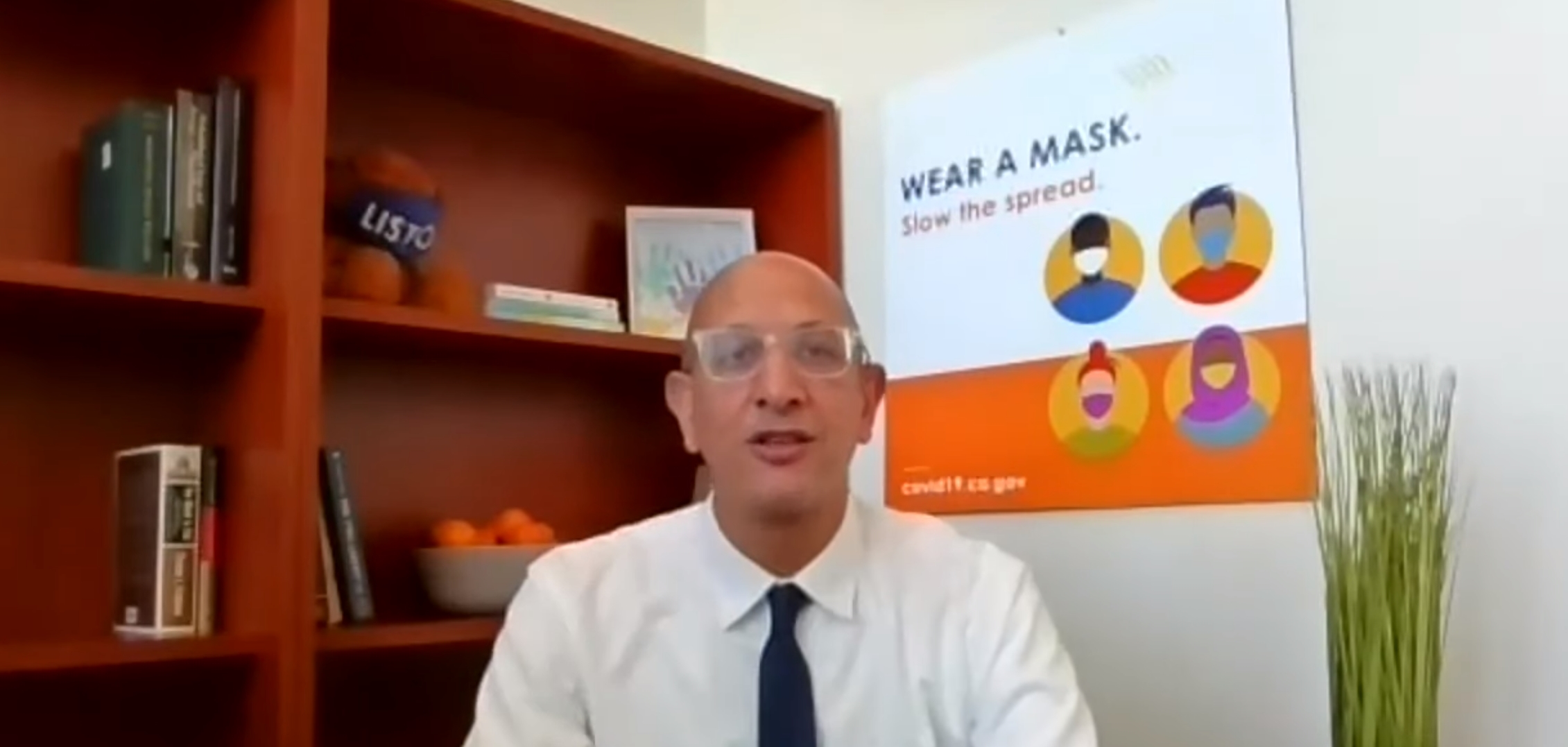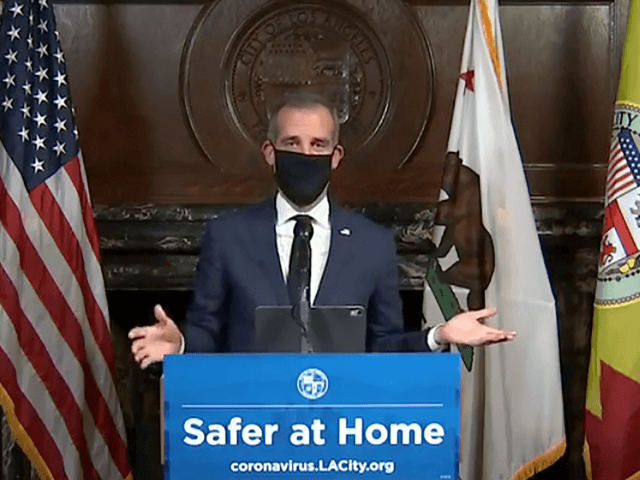
Assemblywoman Eloise Gómez Reyes. (Photo: Kevin Sanders for California Globe)
AB 685 – Employer Notices of COVID-19 Exposures
New reporting burdens placed on businesses
By Chris Micheli, September 21, 2020 6:45 am
On September 17, Governor Gavin Newsom signed Assembly Bill 685 by Assemblywoman Eloise Gómez Reyes (D-Grand Terrace) into law as Chapter 84, to require public agencies to notify employees if they’ve potentially been exposed to COVID-19 at the worksite. The bill amends, repeals, and adds Sections 6325, 6432 and 6409.6 of the Labor Code.
Section 1 of the bill contains five legislative findings and declarations, including that current law lacks clarity regarding an employer’s reporting requirements, including to their own workers, and that “it is imperative that positive COVID-19 tests or diagnoses be reported immediately in the occupational setting, to members of the public, and to relevant state agencies.”
Section 2 of the bill amended Labor Code Section 6325 by adding a new subdivision (b) to the statute. This new provision specifies that when DLSC opines that a place of employment, operation, or process, or any part thereof, exposes workers to the risk of infection with severe acute respiratory syndrome coronavirus 2 (SARS-CoV-2) so as to constitute an imminent hazard to employees, the performance of the operation or process, or entry into a place of employment, may be prohibited, and a notice must be provided to the employer and posted in a conspicuous place at the place of employment.
This prohibition of use must be limited to the immediate area in which the imminent hazard exists, and the Division of Labor Standards Enforcement cannot prohibit the performance of any operation or process, entry into or use of a place of employment, or any part thereof, which is not exposing employees to, or is outside the area of imminent hazard.
In addition, this prohibition must be issued in a manner so as not to materially interrupt the performance of critical governmental functions essential to ensuring public health and safety functions or the delivery of electrical power or water. This notice cannot be removed except by an authorized representative of the DLSE, nor until the place of employment, operation, or process is made safe and the required safeguards or safety appliances or devices are provided.
This section remains in effect only until January 1, 2023.
Section 3 of the bill added Labor Code Section 6325. If the DLSE determines that a place of employment, machine, device, apparatus, or equipment or any part thereof is in a dangerous condition, is not properly guarded or is dangerously placed so as to constitute an imminent hazard to employees, then DLSE must prohibit entry or use and a conspicuous notice to that effect must be attached.
A prohibition of use must be limited to the immediate area in which the imminent hazard exists, and the DLSE cannot prohibit any entry in or use of a place of employment, machine, device, apparatus, or equipment which is outside the area of imminent hazard. The posted notice can only be removed by a DLSE representative.
This section becomes operative on January 1, 2023.
Section 4 of the bill added Labor Code Section 6409.6. If an employer or representative of the employer receives a notice of potential exposure to COVID-19, the employer must take all of the following actions within one business day of the notice of potential exposure:
- Provide a written notice to all employees, and the employers of subcontracted employees, who were on the premises at the same worksite as the qualifying individual within the infectious period that they may have been exposed to COVID-19 in a manner the employer normally uses to communicate employment-related information.
- Provide a written notice to the exclusive representative, if any, of employees.
- Provide all employees who may have been exposed and the exclusive representative, if any, with information regarding COVID-19-related benefits to which the employee may be entitled under applicable federal, state, or local laws.
- Notify all employees, and the employers of subcontracted employees and the exclusive representative, if any, on the disinfection and safety plan that the employer plans to implement and complete per the guidelines of the federal Centers for Disease Control.
If an employer or representative of the employer is notified of the number of cases that meet the definition of a COVID-19 outbreak, within 48 hours, the employer must notify the local public health agency in the jurisdiction of the worksite of the names, number, occupation, and worksite of employees. An employer must also report the business address and NAICS code of the worksite where the qualifying individuals work.
This notice must contain the same information as would be required in an incident report in a Cal/OSHA Form 300 injury and illness log, unless the information is inapplicable or unknown to the employer. This requirement applies regardless of whether the employer is required to maintain a Cal/OSHA Form 300 injury and illness log.
This section provides definitions for the following terms: “COVID-19,” “infectious period,” “notice of potential exposure,” “qualifying individual,” and “worksite”. An employer is prohibited from retaliating against a worker for disclosing a positive COVID-19 test or diagnosis or order to quarantine or isolate. Workers who believe they have been retaliated against may file a complaint with the Division of Labor Standards Enforcement.
The State Department of Public Health is required to make workplace industry information received from local public health departments available on its internet website in a manner that allows the public to track the number and frequency of COVID-19 outbreaks as well as the number of COVID-19 cases and outbreaks by industry reported by any workplace. In addition, local public health departments and the DLSE must provide a link to this page on their internet websites.
This code section applies to both private and public employers, except a “health facility.” Moreover, this section does not apply to employees who, as part of their duties, conduct COVID-19 testing or screening or provide direct patient care or treatment to individuals who are known to have tested positive for COVID-19, are persons under investigation, or are in quarantine or isolation related to COVID-19, unless the qualifying individual is an employee at the same worksite.
Finally, an employer must maintain records of the written notifications for a period of at least three years. DLSE generally enforces the provisions of this section by issuing a citation alleging a violation, along with a notice of civil penalty. Any person who receives a citation and penalty may appeal the citation and penalty to the appeals board.
Section 6 of the bill added a new version of Labor Code Section 6432 effective January 1, 2023. There is a rebuttable presumption that a “serious violation” exists in a place of employment if the DLSE demonstrates that there is a realistic possibility that death or serious physical harm could result from the actual hazard created by the violation. The demonstration of a violation by DLSE is not sufficient by itself to establish that the violation is serious. The actual hazard may consist of:
- A serious exposure exceeding an established permissible exposure limit.
- The existence in the place of employment of one or more unsafe or unhealthful practices, means, methods, operations, or processes that have been adopted or are in use.
Before issuing a citation alleging that a violation is serious, DLSE must make a reasonable attempt to determine and consider at least the following:
- Training for employees and supervisors relevant to preventing employee exposure to the hazard or to similar hazards.
- Procedures for discovering, controlling access to, and correcting the hazard or similar hazards.
- Supervision of employees exposed or potentially exposed to the hazard.
- Procedures for communicating to employees about the employer’s health and safety rules and programs.
- Information that the employer wishes to provide, at any time before citations are issued.
DLSE must determine and consider the facts if, not less than 15 days prior to issuing a citation for a serious violation, the DLSE delivers to the employer a standardized form containing the alleged violation descriptions that DLSE intends to cite as serious and clearly soliciting the information specified. The DLSE director is required to prescribe the form for the alleged violation descriptions and solicitation of information.
If the DLSE establishes a presumption that a violation is serious, the employer may rebut the presumption and establish that a violation is not serious by demonstrating that the employer did not know and could not, with the exercise of reasonable diligence, have known of the presence of the violation. The employer may accomplish this by demonstrating specific steps and actions it took.
If the employer does not provide information in response to a DLSE inquiry made, then the employer is not be barred from presenting that information at the hearing and no negative inference it to be drawn. The employer may offer different information at the hearing than what was provided to the DLSE and may explain any inconsistency, but the trier of fact may draw a negative inference from the prior inconsistent factual information
“Serious physical harm” is defined to mean any injury or illness, specific or cumulative, occurring in the place of employment or in connection with any employment, that results in any of the following:
- Inpatient hospitalization for purposes other than medical observation.
- The loss of any member of the body.
- Any serious degree of permanent disfigurement.
- Impairment sufficient to cause a part of the body or the function of an organ to become permanently and significantly reduced in efficiency on or off the job.
This section becomes operative on January 1, 2023.
- California Department of Child Support Services - December 24, 2025
- Mistakes in Legal Pleadings - December 23, 2025
- The Division of Property Concerning Retirement Plan Benefits - December 23, 2025





Outrage on top of outrage on top of outrage on top of outrage is being committed in the name of the phony Covid Aftermath Charade. This is the latest one. What’s next?